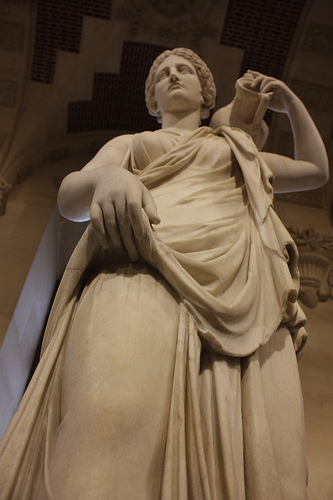Matriarchy
Matriarchy (or gynecocracy) refers to a gynecocentric form of society, in which the leading role is taken by the women and  especially by the mothers of a community.
especially by the mothers of a community.
Strongly matrilocal societies sometimes are referred to as matrifocal, and there is some debate concerning the terminological delineation between matrifocality and matriarchy. Even in societies that are patriarchal, there are cases of queens regant, such as Elizabeth I and Victoria of England.
History of the term
Since the 19th century, sociologists, philosophers and historians have debated and explored the concept of matriarchy. In his ‘Das Mutterrecht’, the Switzerland philosopher, Johann Jakob Bachofen was the first to develop the concept of a ‘Goddess’ figure, and theorised about matriarchy, positing that since only maternity could be proven, women were dominant in pre-historical societies. He also developed and defined terms that would be used by later generations of thinkers, such as mother-right, female rule, gyneocracy, and female authority.
Several generations of ethnologists were inspired by Bachofen’s pseudo-evolutionary theory of archaic matriarchy. Following him and Jane Ellen Harrison, scholars, usually arguing from known myths or oral traditions and examination of Neolithic female cult-figures, suggested that many ancient societies might have been matriarchal, or even, that there existed a wide-ranging matriarchal society prior to the ancient cultures of which we are aware.
In 1930, Austrian writer Bertha Diener wrote Mothers and Amazons which was the first work to focus on women’s cultural history. Diener argued that in the past all human societies originated as matriarchal and then at some point developed into patriarchal societies. These theories were developed in the 1950s by Marija Gimbutas.
Matriarchy and Feminism
From the 1970s these ideas were taken up by popular writers of Feminism . However, more recently, the feminist scenarios of Neolithic matriarchy have been called into question and are not emphasized in third-wave feminism.
The original evidence recognized by Gimbutas, however, of Neolithic societies being more egalitarian than the Bronze Age Indo-European and Semitic patriarchies remains valid. Gimbutas herself has not described these societies as “matriarchal”, preferring the term “woman-centered” or “matristic”. Del Giorgio in The Oldest Europeans (2006) insists on a matrifocal, matrilocal, matrilineal Paleolithic society. Kurt Derungs is an author advocating an “anthropology of landscape” based on alleged matriarchal traces in toponymy and folklore.
Feminist authors adhering to the Modern Matriarchal Studies school of thought consider any non-patriarchic form of society as falling within their field, including all examples of matrilineality, matrilocality and avunculism.
Matriarchy today
While still a subject of debate amongst anthropologists, it has been suggested that the following societies are matriarchal: the Nagovisi of Bougainvillea in the South Pacific, the Khasi of Meghalaya, India , and the Machinguenga of Peru . In addition, there are societies where women enjoy full sexual, and economical control over themselves, for example Pueblo Indians (the Zuni, Laguna and Hopi), the pre-19th century Iroquois and Innu (Montaignais-Naskapi), the Vanatinai, and Hawaii under Queen Liliuokani.


